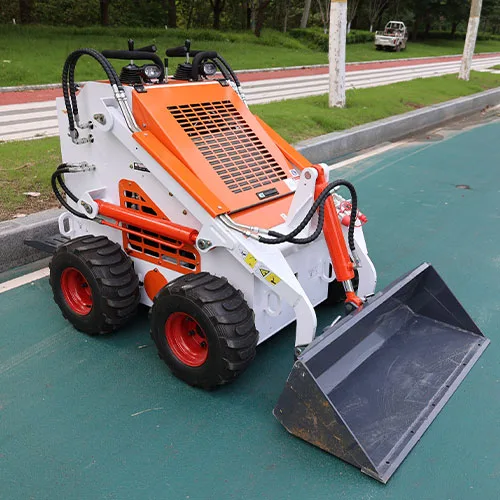Welcome to My Blog!
Before we dive into the content, I’d love for you to join me on my social media platforms where I share more insights, engage with the community, and post updates. Here’s how you can connect with me:
Facebook:https://www.facebook.com/people/Shandong-Huaying-International-Trade-CoLtd/61569380364327/
Now, let’s get started on our journey together. I hope you find the content here insightful, engaging, and valuable.
Table of Contents
Introduction
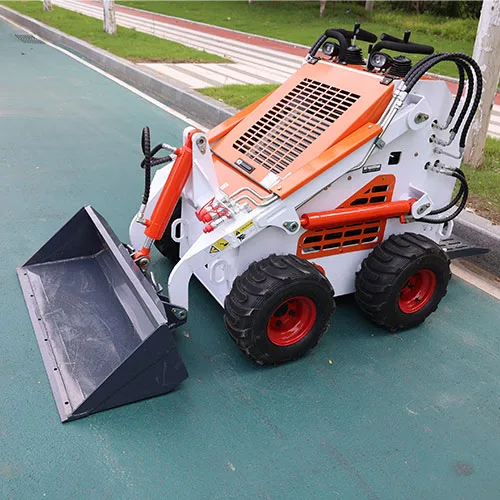
The 4 wheel drive skid steer loader, a versatile and compact piece of construction equipment, has become a mainstay on job sites worldwide. Its unique design and maneuverability allow it to excel in various applications, from construction and landscaping to agriculture and demolition. This blog post delves into the numerous benefits of the 4 wheel drive skid steer loader, exploring its key features, advantages, and common applications. We will also address frequently asked questions and provide a comprehensive overview of why this machine is so valuable in diverse industries.
What is a 4 Wheel Skid Steer Loader?
A 4 wheel drive skid steer loader is a compact, rigid-frame machine with lift arms used to attach a wide variety of tools or attachments. The term “skid steer” refers to its unique steering method. Unlike conventional steering systems, a skid steer loader steers by controlling the speed and direction of its left and right wheels independently. This allows the machine to “skid” or turn within its own footprint, making it incredibly maneuverable in tight spaces. The 4 wheel drive system ensures consistent power delivery to all wheels, maximizing traction and performance in various terrains.
Key Features of 4 Wheel Skid Steer Loaders
- Compact Size: Their small footprint allows access to confined areas.
- Maneuverability: Skid steering enables zero-radius turns.
- Versatility: A wide range of attachments expands functionality.
- Powerful Hydraulics: Provides ample power for various tasks.
- Four-Wheel Drive: Ensures superior traction in diverse conditions.
Advantages of 4 Wheel Drive Skid Steer Loaders
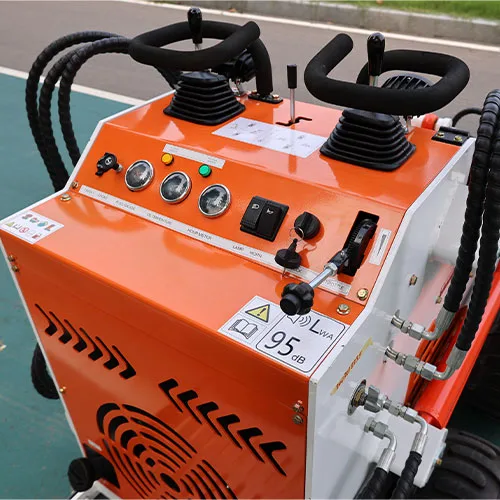
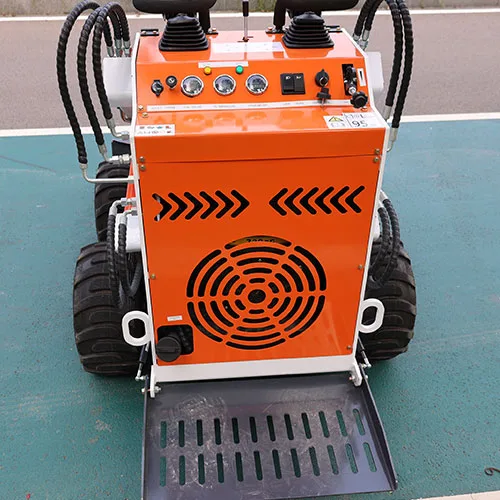
The 4 wheel drive system is a pivotal feature that significantly enhances the capabilities of these loaders. Several advantages set 4 wheel drive skid steer loaders apart from other types of construction equipment.
Superior Traction with 4 Wheel Drive
The 4 wheel drive system provides exceptional traction in challenging terrains such as mud, snow, sand, and gravel. This ensures consistent performance and minimizes downtime due to getting stuck. This enhanced traction leads to improved productivity and efficiency on the job site.
Enhanced Maneuverability in Tight Spaces
While all skid steers are known for their maneuverability, the 4 wheel drive system further enhances this capability. The independent control of each wheel, combined with the power distribution of 4 wheel drive, allows for precise movements in confined areas, enabling operators to navigate obstacles with ease.
Increased Productivity with 4 Wheel Skid Steer Loaders
The combination of superior traction and enhanced maneuverability translates directly to increased productivity. Operators can complete tasks more quickly and efficiently, regardless of the terrain. This leads to reduced project timelines and improved profitability.
Reduced Ground Disturbance with 4 Wheel Drive
Compared to tracked machines, 4 wheel drive skid steer loaders often cause less ground disturbance, especially on sensitive surfaces like lawns or paved areas. This makes them a preferred choice for landscaping and urban construction projects.
Versatility Through Attachments for 4 Wheel Drive Skid Steer Loaders
One of the most significant benefits of 4 wheel drive skid steer loaders is their versatility. A vast array of attachments can be easily connected to the loader’s quick-attach system, transforming it into a multi-purpose machine.
Common Attachments for 4 Wheel Drive Skid Steer Loaders:
- Buckets: For digging, loading, and material handling.
- Augers: For drilling holes for posts, foundations, and planting.
- Grapples: For handling logs, debris, and other bulky materials.
- Brooms: For cleaning streets, parking lots, and construction sites.
- Snow Blowers: For clearing snow from driveways, sidewalks, and parking areas.
- Trenchers: For digging trenches for utilities and irrigation systems.
- Forks: For material handling, especially palletized goods.
Applications of 4 Wheel Drive Skid Steer Loaders
The versatility of 4 wheel drive skid steer loaders makes them suitable for a wide range of applications across various industries.
Construction Applications of 4 Wheel Drive Skid Steer Loaders
In construction, these loaders are used for tasks such as site preparation, material handling, demolition, and cleanup. Their compact size and maneuverability make them ideal for working in congested urban environments and on tight job sites.
Landscaping Applications of 4 Wheel Drive Skid Steer Loaders
Landscapers use skid steer loaders for tasks such as grading, digging, planting, and material transport. The ability to switch between different attachments quickly makes them invaluable for various landscaping projects.
Agricultural Applications of 4 Wheel Drive Skid Steer Loaders
In agriculture, these machines are used for tasks such as feeding livestock, cleaning barns, moving hay bales, and general farm maintenance. Their 4 wheel drive system ensures reliable performance in muddy and uneven farm terrain.
Demolition Applications of 4 Wheel Drive Skid Steer Loaders
With the appropriate attachments, such as breakers and grapples, skid steer loaders can be used for light demolition work. Their maneuverability allows them to work in confined spaces where larger demolition equipment cannot access.
Comparing 4 Wheel Drive Skid Steer Loaders to Other Equipment Types
While 4 wheel drive skid steer loaders offer numerous advantages, it’s essential to understand how they compare to other types of equipment.
4 Wheel Drive Skid Steer Loaders vs. Compact Track Loaders
Compact track loaders (CTLs) offer even better traction and lower ground pressure than skid steer loaders, making them suitable for extremely soft or uneven terrain. However, CTLs are generally more expensive and have higher maintenance costs. Skid steer loaders are more maneuverable on hard surfaces and often have a lower operating cost.
4 Wheel Drive Skid Steer Loaders vs. Wheel Loaders
Wheel loaders are larger and more powerful than skid steer loaders, making them suitable for large-scale material handling and earthmoving. However, they are less maneuverable and cannot operate in confined spaces as effectively as skid steer loaders.
Understanding Skid Steer Loader Specifications
Understanding the specifications of a 4 wheel drive skid steer loader is crucial for selecting the right machine for the job.
| Specification | Description |
|---|---|
| Operating Capacity | The maximum weight the loader can safely lift and carry. |
| Tipping Load | The weight at which the loader will begin to tip forward. |
| Engine Horsepower | The power output of the engine. |
| Hydraulic Flow | The rate at which hydraulic fluid is pumped, which affects the performance of attachments. |
| Operating Weight | The weight of the machine without any attachments or load. |
| Lift Height | The maximum height to which the loader can raise its bucket or attachment. |
| Wheelbase | The distance between the front and rear axles. |
Maintenance of 4 Wheel Drive Skid Steer Loaders
Proper maintenance is essential for ensuring the longevity and optimal performance of a 4 wheel drive skid steer loader. Regular maintenance tasks include:
- Checking and changing engine oil and filters.
- Inspecting and lubricating the chassis and moving parts.
- Checking tire pressure and condition.
- Inspecting and maintaining the hydraulic system.
- Inspecting and maintaining the cooling system.
Choosing the Right 4 Wheel Drive Skid Steer Loader
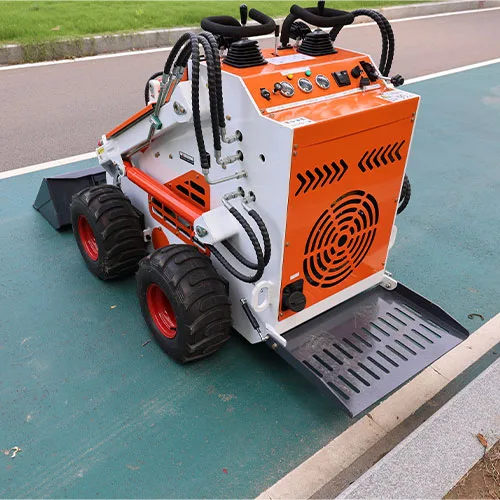
Selecting the right 4 wheel drive skid steer loader depends on various factors, including the type of work to be performed, the operating environment, and budget constraints. Consider the following factors:
- Operating Capacity: Choose a loader with sufficient lifting capacity for the intended tasks.
- Engine Power: Select an engine with enough power to handle the required attachments and workloads.
- Hydraulic Flow: Ensure the hydraulic system provides adequate flow for the chosen attachments.
- Operating Environment: Consider the terrain and working conditions.
- Budget: Balance performance requirements with cost considerations.
Conclusion
4 wheel drive skid steer loaders are powerful and versatile machines that offer many advantages to a wide range of industries. Their superior traction, enhanced maneuverability and wide range of attachment options make them ideal for a variety of tasks. By understanding their capabilities, applications and maintenance requirements, you can get the most out of these valuable machines. We hope this blog post has provided you with a comprehensive overview of 4 wheel drive skid steer loaders and helped you understand how they can benefit your business. By carefully considering your needs and selecting the right machine, you can increase productivity, efficiency and profitability.
FAQ
What is the difference between a skid steer loader and a compact track loader?
Skid steer loaders use wheels for mobility, while compact track loaders use tracks. Tracks provide better traction and lower ground pressure, making them suitable for soft or uneven terrain. Skid steers are generally more maneuverable on hard surfaces.
How do you steer a skid steer loader?
Skid steer loaders are steered by controlling the speed and direction of the left and right wheels independently. This allows the machine to “skid” or turn within its own footprint.
How much does a skid steer loader cost?
The cost of a skid steer loader varies depending on its size, features, and condition. New machines can range from tens of thousands of dollars to over one hundred thousand dollars.

